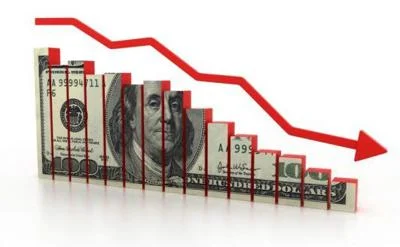Economy
Global Economic Disharmony: Seeking Synchronization
In the span of just 24 hours last week,(more of this in wsj news)the central banks of the world’s three largest economic blocs reached strikingly different conclusions: the eurozone raised rates, the U.S. held steady, and China implemented a cut. These conflicting moves are indicative of economies increasingly marching to their own beats, making it harder for investors to decipher the global economic landscape and potentially posing challenges for the Federal Reserve in managing inflation.
The Eurozone finds itself in a technical recession, yet its central bank expects inflation to persist. China, on the other hand, is not grappling with inflation but is facing the consequences of prolonged lockdowns and a housing market bubble. Surprisingly, the U.S. economy is performing well, with inflation receding, but underlying price pressures remain stubbornly high.
This divergence among economies has already impacted currency markets. China’s yuan has weakened throughout the year, a development that should enhance its export competitiveness, limit imports, and bolster its economy. However, China’s markets operate to their own rhythm, partially detached from global portfolios due to capital controls and concerns about expropriation.
WSJ Print Edition Subscription 1 Year
Of greater significance for U.S. investors are the actions taken by the European Central Bank and the Bank of England, which are perceived as more hawkish than the Federal Reserve. This perception has driven up bond yields in Europe, resulting in a depreciation of the dollar against the euro and the pound sterling.
While such currency movements are expected in a floating exchange rate system, the sensitivity of investors to dollar weakness and its subsequent impact on confidence pose challenges. American investors are accustomed to primarily considering their investments in U.S. dollars, given the greenback’s status as the global reserve currency. Nevertheless, the dollar’s fluctuations have profound effects, often overlooked by U.S. investors.
For instance, as the Fed increased rates, the strengthening dollar negatively affected U.S. stocks until the autumn. However, as the ECB and Bank of England signaled their commitment to rate hikes, the dollar began to weaken, leading to a surge in U.S. stock prices. Seen through the lens of euros, American stocks never experienced the typical 20% decline defining a bear market, nor did they rebound to the extent of entering a new bull market. The currency played a more significant role in this drama than the stock market itself.
If you want to be more informed, wsj news
This outcome may seem counterintuitive and creates complexities for the Federal Reserve. In theory, higher rates in Europe should dampen demand, including for U.S. exports to the region, while also driving up U.S. yields as some investors shift to higher-yielding European bonds. Both of these developments should be detrimental to the U.S. economy and its stock market.
However, if investors continue to believe in the inverse relationship between the dollar and stocks, the weaker dollar alone can make American shareholders feel wealthier, even if their purchasing power remains the same in foreign-currency terms. The perception of increased wealth tends to encourage borrowing and spending, supporting the economy—an outcome contrary to the Fed’s intentions of slowing down the economy. Additionally, a weaker dollar enhances the competitiveness of U.S. production, further bolstering the economy. Consequently, without the Fed taking any action, rate hikes in other economies may inadvertently provide a boost to the United States.
The impact of a weak dollar extends beyond U.S. borders. Given the interconnectedness of global capital markets, multiple countries and companies actively borrow in dollars, while major international investors predominantly think in terms of the dollar. Therefore, a weak dollar fosters positive sentiment across the board. European stocks, when measured in local currency, and emerging markets, excluding China, have seen similar gains to the S&P 500 as the dollar has weakened.
In conclusion, navigating the currents of global economic divergence poses challenges for investors. This is from wsj news.

